
How to Use Analog Temperature Sensor: Examples, Pinouts, and Specs
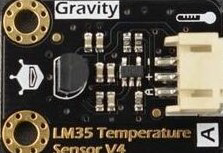
 Design with Analog Temperature Sensor in Cirkit Designer
Design with Analog Temperature Sensor in Cirkit DesignerIntroduction
The Analog Temperature Sensor (LM35), manufactured by DFRobot, is a precision device designed to measure temperature and output a corresponding analog voltage signal. This sensor provides a linear relationship between temperature and voltage, making it easy to integrate into various electronic systems. Its compact design and high accuracy make it ideal for applications requiring continuous temperature monitoring.
Explore Projects Built with Analog Temperature Sensor
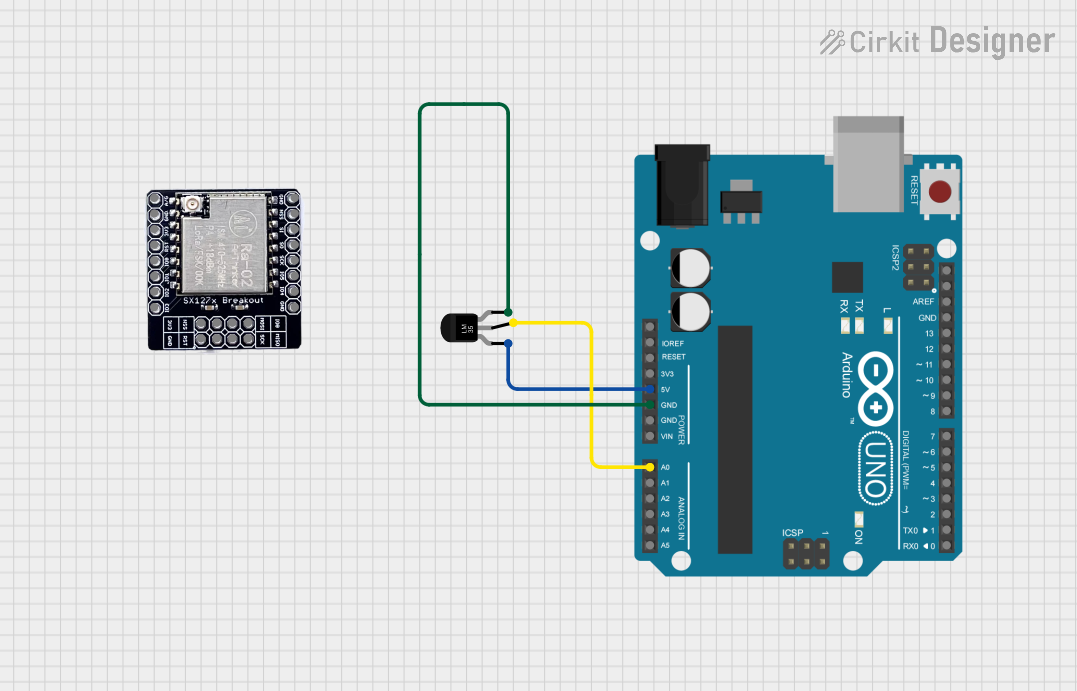
 Open Project in Cirkit Designer
Open Project in Cirkit Designer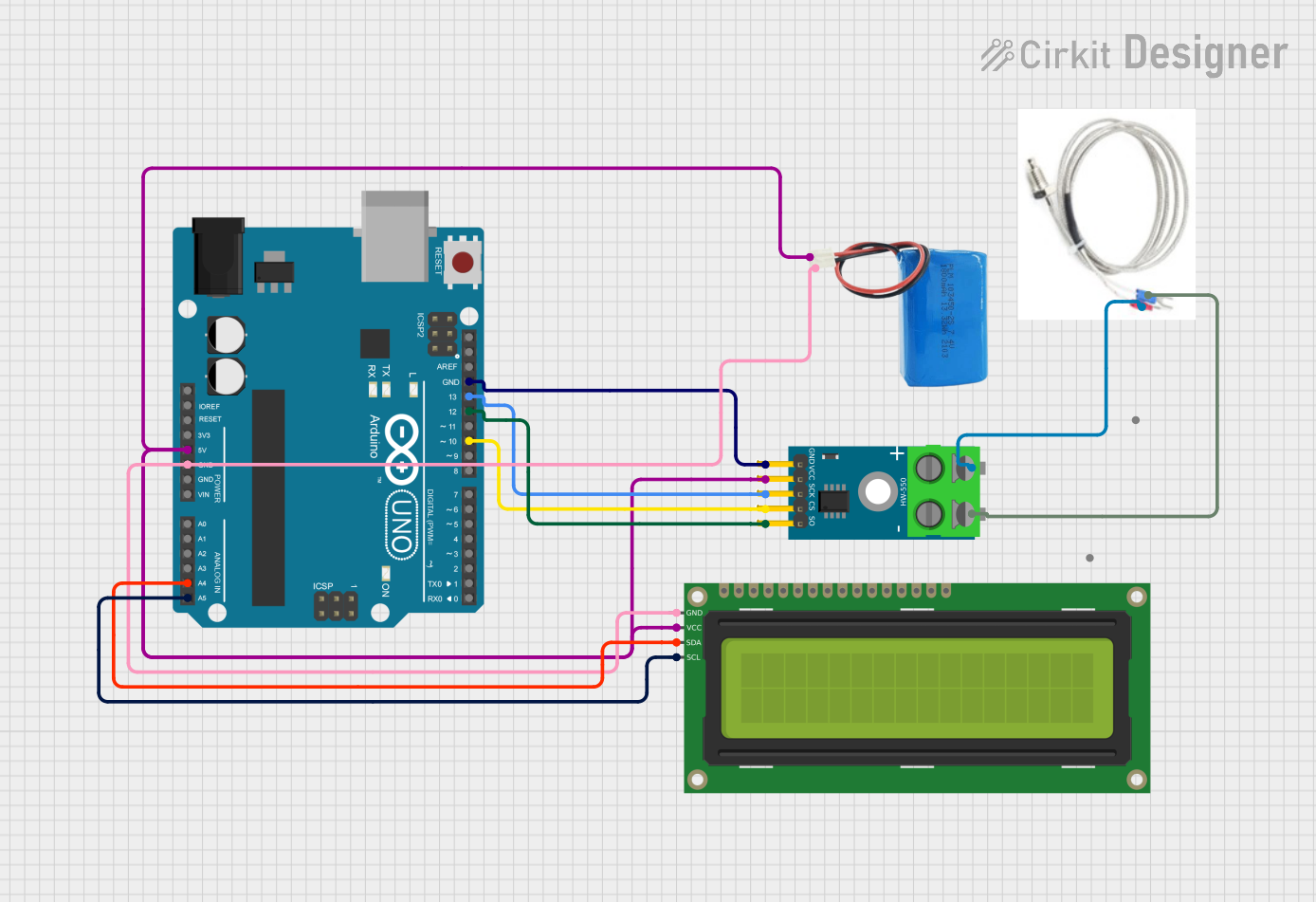
 Open Project in Cirkit Designer
Open Project in Cirkit Designer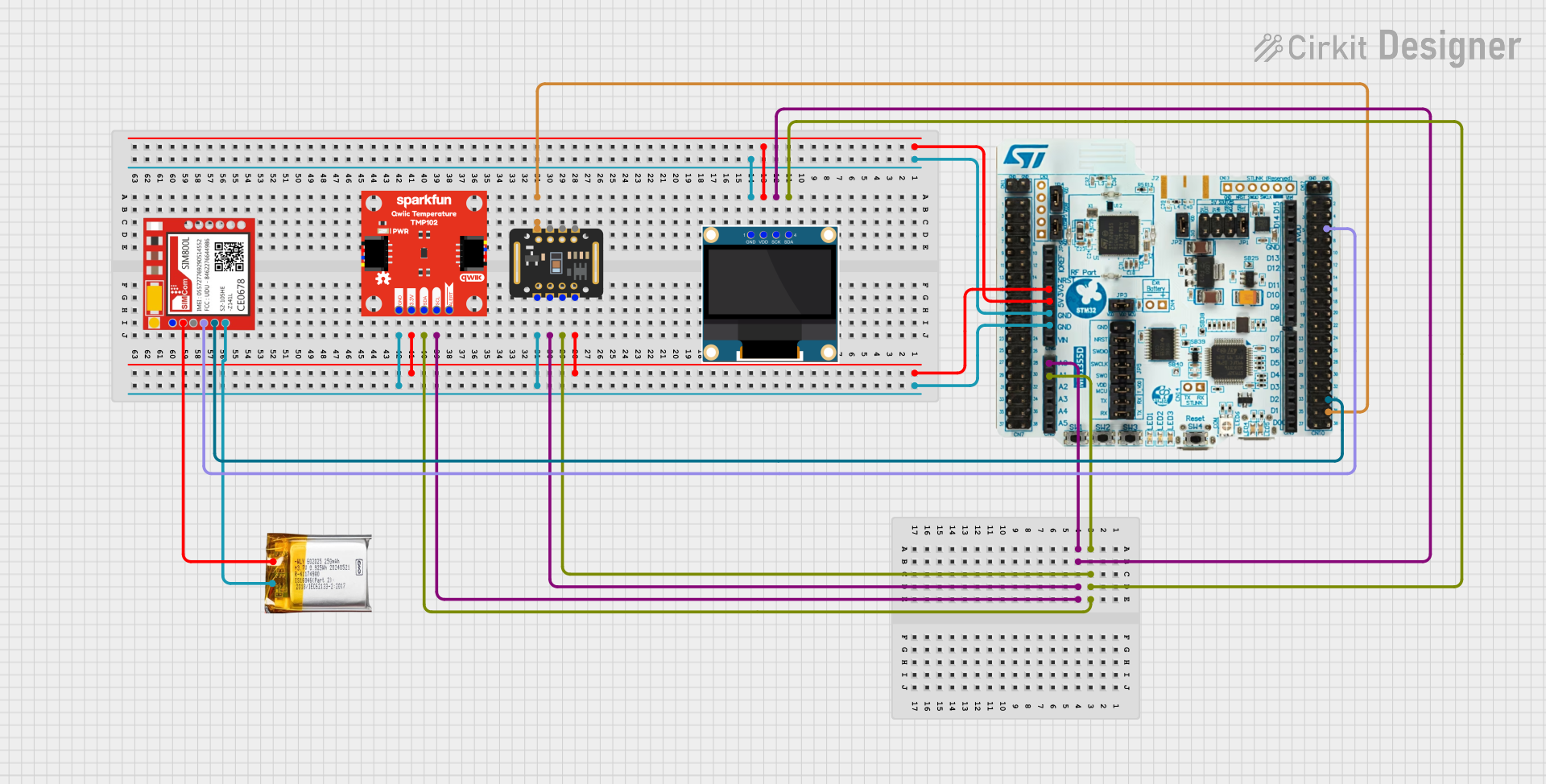
 Open Project in Cirkit Designer
Open Project in Cirkit Designer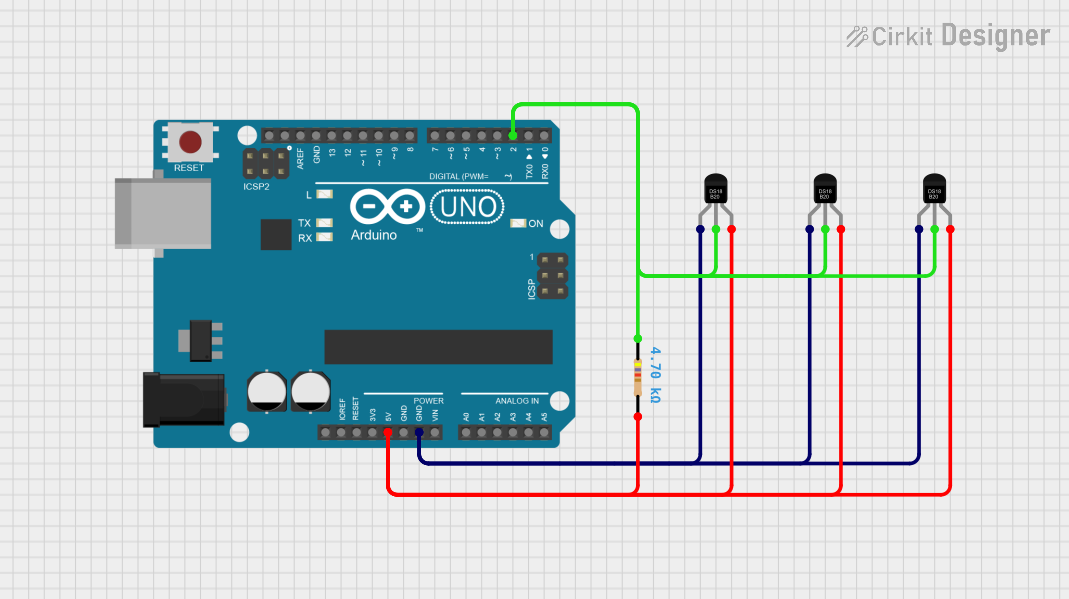
 Open Project in Cirkit Designer
Open Project in Cirkit DesignerExplore Projects Built with Analog Temperature Sensor

 Open Project in Cirkit Designer
Open Project in Cirkit Designer
 Open Project in Cirkit Designer
Open Project in Cirkit Designer
 Open Project in Cirkit Designer
Open Project in Cirkit Designer
 Open Project in Cirkit Designer
Open Project in Cirkit DesignerCommon Applications and Use Cases
- Environmental monitoring systems
- HVAC (Heating, Ventilation, and Air Conditioning) systems
- Industrial temperature control
- Weather stations
- Home automation and IoT projects
- Educational and prototyping purposes
Technical Specifications
The LM35 is a highly accurate and reliable temperature sensor. Below are its key technical details:
| Parameter | Value |
|---|---|
| Manufacturer | DFRobot |
| Part ID | LM35 |
| Temperature Range | -55°C to +150°C |
| Output Voltage | 10 mV/°C |
| Accuracy | ±0.5°C (at 25°C) |
| Operating Voltage | 4V to 30V |
| Current Consumption | 60 µA (typical) |
| Output Impedance | 0.1 Ω |
| Response Time | 1 second (typical) |
| Package Type | TO-92 or similar |
Pin Configuration and Descriptions
The LM35 sensor typically comes in a 3-pin TO-92 package. Below is the pinout:
| Pin Number | Pin Name | Description |
|---|---|---|
| 1 | VCC | Power supply input (4V to 30V) |
| 2 | VOUT | Analog voltage output proportional to temperature |
| 3 | GND | Ground (0V reference) |
Usage Instructions
The LM35 is straightforward to use in a circuit. Follow the steps below to integrate it into your project:
Connecting the LM35
- Power Supply: Connect the VCC pin to a stable power source (4V to 30V). For most microcontroller projects, 5V is commonly used.
- Ground: Connect the GND pin to the ground of your circuit.
- Output Signal: Connect the VOUT pin to an analog input pin of your microcontroller or ADC (Analog-to-Digital Converter).
Important Considerations
- Calibration: The LM35 outputs 10 mV per degree Celsius. For example, at 25°C, the output voltage will be 250 mV.
- Noise Reduction: Use a decoupling capacitor (e.g., 0.1 µF) between VCC and GND to reduce noise.
- Placement: Avoid placing the sensor near heat sources or in direct sunlight to ensure accurate readings.
- Wiring: Keep the wiring short to minimize signal loss or interference.
Example: Using LM35 with Arduino UNO
Below is an example of how to use the LM35 with an Arduino UNO to measure temperature:
// Define the analog pin connected to the LM35 sensor
const int sensorPin = A0;
void setup() {
Serial.begin(9600); // Initialize serial communication at 9600 baud
}
void loop() {
int sensorValue = analogRead(sensorPin); // Read the analog value from the sensor
float voltage = sensorValue * (5.0 / 1023.0); // Convert ADC value to voltage
float temperature = voltage * 100.0; // Convert voltage to temperature (10 mV/°C)
// Print the temperature to the Serial Monitor
Serial.print("Temperature: ");
Serial.print(temperature);
Serial.println(" °C");
delay(1000); // Wait for 1 second before the next reading
}
Notes:
- Ensure the Arduino is powered via USB or an external power source.
- The formula
voltage * 100.0converts the voltage to temperature in Celsius.
Troubleshooting and FAQs
Common Issues
Incorrect Temperature Readings
- Cause: Noise or interference in the circuit.
- Solution: Add a decoupling capacitor (0.1 µF) between VCC and GND.
No Output Signal
- Cause: Incorrect wiring or insufficient power supply.
- Solution: Double-check the connections and ensure the power supply is within the specified range (4V to 30V).
Fluctuating Readings
- Cause: Long wires or unstable power supply.
- Solution: Use shorter wires and a regulated power supply.
Overheating of Sensor
- Cause: Excessive current or incorrect placement near heat sources.
- Solution: Verify the power supply voltage and ensure proper placement.
FAQs
Q1: Can the LM35 measure negative temperatures?
A1: Yes, the LM35 can measure temperatures below 0°C. However, the output voltage will be negative, which may require additional circuitry to interpret.
Q2: Can I use the LM35 with a 3.3V microcontroller?
A2: The LM35 requires a minimum of 4V to operate. For 3.3V systems, consider using a level shifter or a different sensor compatible with 3.3V.
Q3: How do I improve the accuracy of the LM35?
A3: Use a stable power supply, minimize noise with capacitors, and calibrate the sensor if necessary.
Q4: What is the maximum distance between the LM35 and the microcontroller?
A4: The LM35 can drive signals over long distances, but for best results, keep the wiring as short as possible to reduce noise and signal loss.
By following this documentation, you can effectively integrate the LM35 analog temperature sensor into your projects for accurate and reliable temperature measurements.